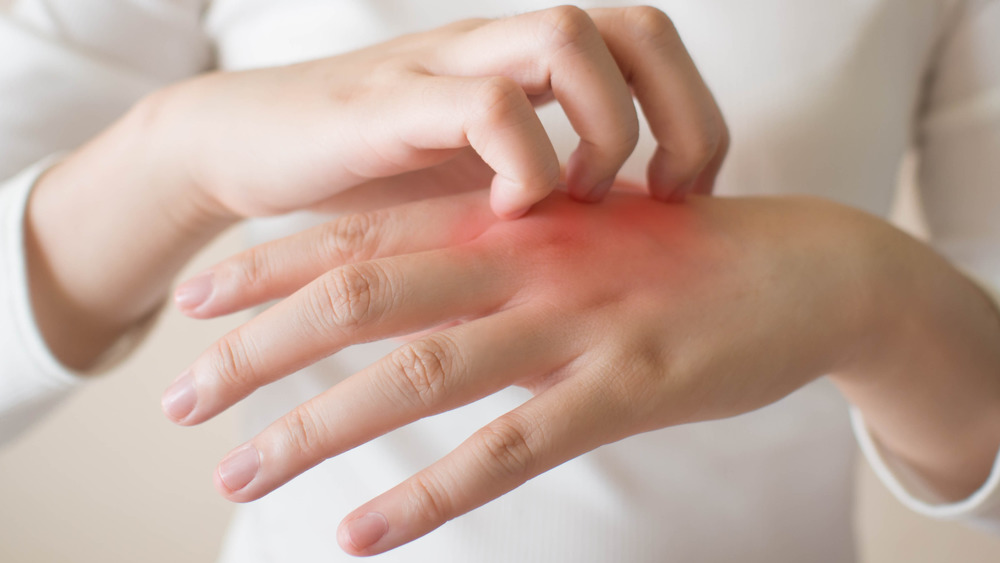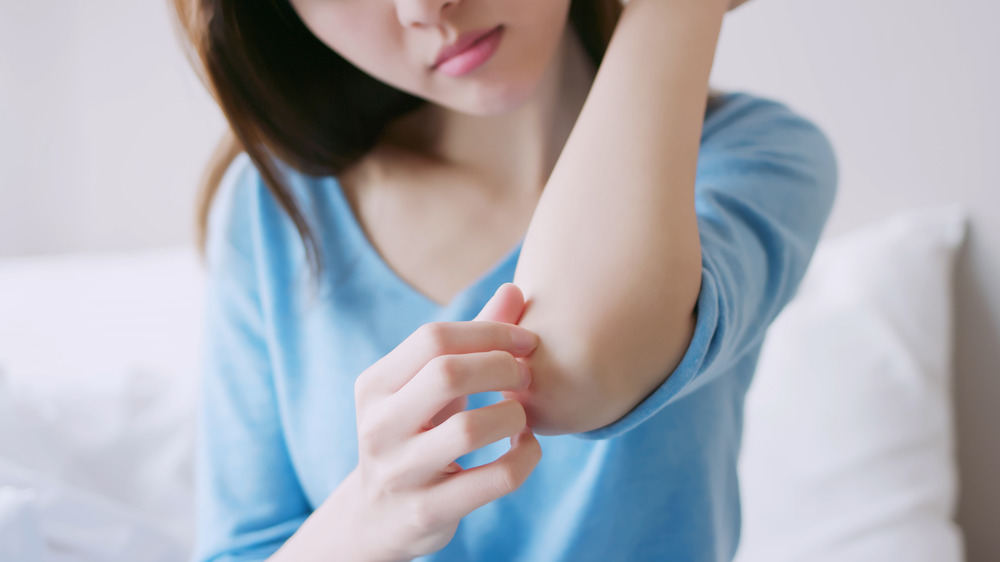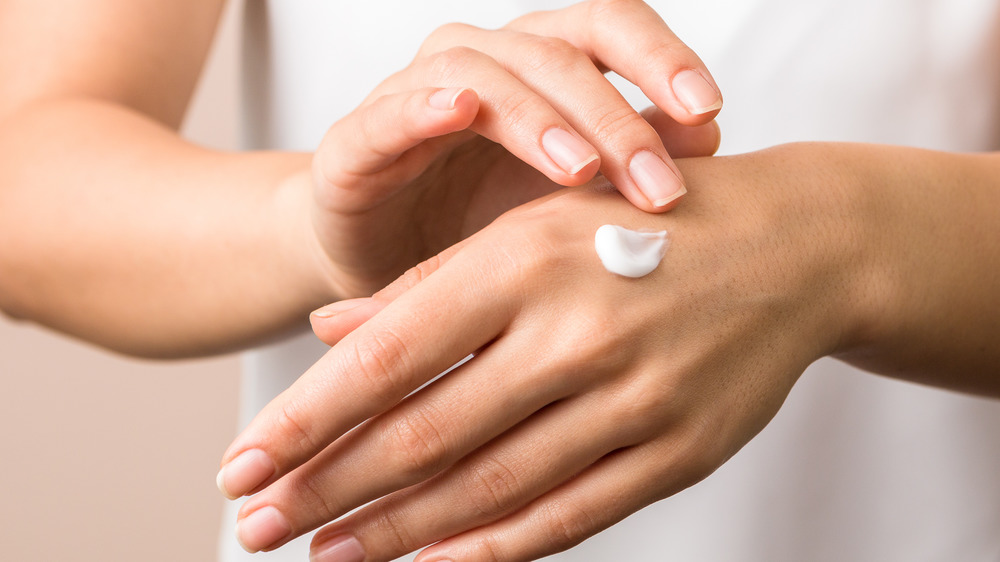Increased Hand Washing Could Lead To Skin Rashes
Earlier this year, the World Health Organization (WHO) enlisted global celebrities, activists, and athletes to kick off the "#SafeHands challenge" in an attempt to encourage people all around the world to wash their hands properly and frequently to help slow the spread of COVID-19. The challenge included two methods of proper hand hygiene; the handrub method, to be used when hands are not visibly soiled and lasting 20 to 30 seconds, and the handwash method, to be used when hands are visibly soiled and lasting 40 to 60 seconds.
While washing your hands properly and frequently is perhaps one of the easiest and most accessible ways to keep yourself and your loved ones safe from COVID-19 and other transmissable diseases, it doesn't come without risk itself. While healthcare workers have historically experienced higher levels of hand eczema or rashes due to the nature of their work, since the onset of the pandemic, doctors around the globe are noticing an increased incidence of hand eczema and various rashes in all populations (via Journal of the American Academy of Dermatology).
So what exactly is eczema? According to the American Academy of Dermatology (AAD), eczema refers to a group of conditions which feature inflamed, irritated, and often itchy skin.
Atopic versus contact dermatitis
The most common form of eczema is atopic dermatitis, affecting nearly one in 10 Americans (via AAD). The disease is not contagious and can begin in either child or adulthood. Typically, symptoms range from dry, itchy skin to painful, widespread rashes. Atopic dermatitis can make the skin very sensitive and easily reactive. For that reason avoiding harsh irritants can help reduce outbreaks. Some may be able to manage their symptoms with light moisturizers while others may need prescription-strength creams and ointments from their dermatologist.
Contact dermatitis is another common form of eczema, and is exactly what you would expect from the name; inflammation of the skin due to contact with a certain substance or allergen (via Mayo Clinic). With contact dermatitis, individuals develop red, itchy rashes in the affected area, sometimes progressing to dry, cracked skin or even developing blisters and swelling. Common allergens include soaps, alcohol sanitizers, fragrances, and jewelry to name a few. In a time when so many are washing their hands with soap more aggressively and more frequently, dermatologist Dr. Shari Sperling, notes that you should be using a gentle soap cleanser like Dove, preferably without any fragrance.
It's important to acknowledge and treat skin rashes
Dr. Joshua Zeichner, director of cosmetic and clinical research in dermatology at Mount Sinai Hospital, told Allure, "It is important to treat these rashes because, in addition to being itchily inflamed, or raw, the skin is at risk for developing an infection." With COVID-19 cases on the rise throughout the country, many are steering clear of hospitals or doctor's offices in an attempt to limit their exposure. However, untreated skin rashes can progress and become very serious, at times even leading to hospitalizations. Thankfully, one silver lining of the pandemic has been the increase in telemedicine access and availability.
Most of these rashes are easy to treat. If the allergen can be determined, simply avoiding it and using a gentle soap cleanser followed by adequate moisturization usually does the trick. The AAD recommends washing hands with lukewarm water, drying adequately, and following up with a hand cream or ointment, making sure to cover the fingernails and tips as well. They also recommend using a moisturizer right after using hand sanitizer, since alcohol-based sanitizers can be very drying.
Obviously, if the integrity of the skin has been lost and you develop sores or significant tears in the skin, contact your primary care provider or dermatologist.



